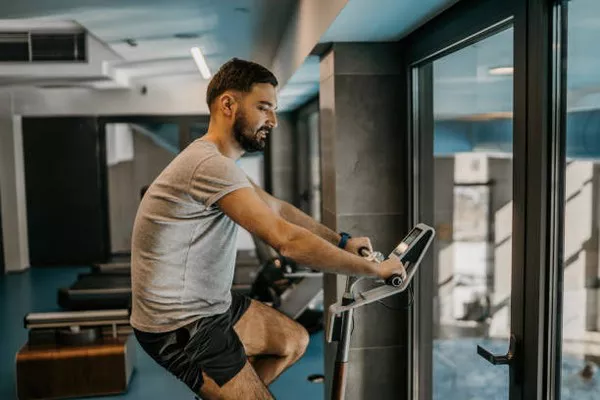Cycling is a popular exercise choice for many, and it’s often praised for its cardiovascular benefits and lower-body toning. But can it help specifically with reducing belly fat? In this comprehensive guide, we’ll explore how cycling impacts belly fat, offer practical fitness and weight loss suggestions, and provide clear, actionable advice for those looking to shed excess belly fat.
Understanding Belly Fat
Before delving into how cycling can aid in reducing belly fat, it’s essential to understand what belly fat is and why it’s a concern.
Belly fat, also known as visceral fat, is the fat stored around your abdomen. Unlike subcutaneous fat, which lies just under the skin, visceral fat is located deeper, around your organs. This type of fat is associated with several health risks, including heart disease, diabetes, and high blood pressure.
How Cycling Affects Fat Loss
Cycling, like any form of aerobic exercise, can help reduce body fat, including belly fat. Here’s how:
1. Burns Calories
Cycling is an effective way to burn calories. When you cycle, your body uses energy, which can lead to a calorie deficit if you maintain a balanced diet. This calorie deficit is crucial for overall fat loss.
2. Boosts Metabolism
Regular cycling can boost your metabolism. A higher metabolism means you burn more calories at rest, which can help in reducing body fat over time.
3. Increases Cardiovascular Health
Cycling improves cardiovascular health, which is linked to better fat metabolism. Improved heart health can enhance your ability to perform various exercises and maintain a healthy weight.
4. Builds Muscle
Cycling primarily works the lower body muscles, including the quadriceps, hamstrings, glutes, and calves. Building muscle can increase your resting metabolic rate, further assisting in fat loss.
Types of Cycling for Belly Fat Reduction
Different types of cycling can have varying effects on belly fat. Here are some common forms of cycling and their benefits:
1. Steady-State Cycling
This involves cycling at a consistent pace for an extended period. It’s great for building endurance and burning calories. Aim for at least 30-60 minutes of steady-state cycling a few times a week.
2. Interval Training
High-Intensity Interval Training (HIIT) involves alternating between high-intensity bursts and periods of lower intensity or rest. This type of cycling can be particularly effective for burning fat due to its afterburn effect, where your body continues to burn calories post-workout.
3. Hill Cycling
Cycling on an incline or hill can increase the intensity of your workout. It engages different muscles and increases calorie expenditure, which can aid in fat loss.
4. Spinning Classes
Spinning classes are group workouts that combine high-intensity intervals with motivational coaching. They can be a fun and effective way to boost calorie burn and improve fitness.
Tips for Effective Cycling and Belly Fat Loss
To maximize the benefits of cycling for belly fat loss, consider these tips:
1. Combine with Strength Training
Cycling alone might not be enough. Incorporate strength training exercises to build muscle throughout your body. Exercises like squats, lunges, and core workouts can complement your cycling routine.
2. Maintain a Healthy Diet
A balanced diet is crucial. Focus on whole foods like fruits, vegetables, lean proteins, and whole grains. Avoid excessive sugar and processed foods, which can contribute to belly fat.
3. Stay Hydrated
Proper hydration is essential for overall health and performance. Drink plenty of water before, during, and after your cycling sessions.
4. Get Adequate Sleep
Sleep plays a significant role in weight management and fat loss. Aim for 7-9 hours of quality sleep per night to support your fitness goals.
5. Track Your Progress
Use a fitness tracker or app to monitor your cycling sessions, calorie expenditure, and overall progress. Tracking can help you stay motivated and make necessary adjustments to your routine.
See Also: Will Green Tea Reduce Belly Fat
Common Mistakes to Avoid
When using cycling as a method for losing belly fat, avoid these common mistakes:
1. Overemphasis on Cycling Alone
Cycling is beneficial, but relying solely on it may not yield the best results. Combine it with other forms of exercise for a well-rounded fitness routine.
2. Neglecting Nutrition
Even if you’re cycling regularly, poor dietary habits can hinder fat loss. Ensure you’re eating a balanced diet to support your efforts.
3. Skipping Rest Days
Rest is crucial for recovery and preventing injury. Avoid overtraining by including rest days in your routine.
Frequently Asked Questions
1. How often should I cycle to lose belly fat?
Aim to cycle at least 3-5 times a week. Combine cycling with other forms of exercise for optimal results.
2. Can I spot-reduce belly fat with cycling?
Spot reduction is a myth. Cycling can help reduce overall body fat, which includes belly fat.
3. How long does it take to see results?
Results vary based on individual factors such as diet, intensity of exercise, and consistency. Generally, you might start to see noticeable changes within a few weeks to a few months.
4. Is cycling better than running for losing belly fat?
Both cycling and running are effective for burning calories and reducing body fat. The best choice depends on your personal preferences and fitness goals.
Conclusion
Cycling is a valuable tool for reducing belly fat, particularly when combined with a balanced diet and other forms of exercise. By incorporating various types of cycling and following practical fitness tips, you can effectively work towards achieving your weight loss goals. Remember, consistency and a holistic approach are key to long-term success in belly fat reduction.


